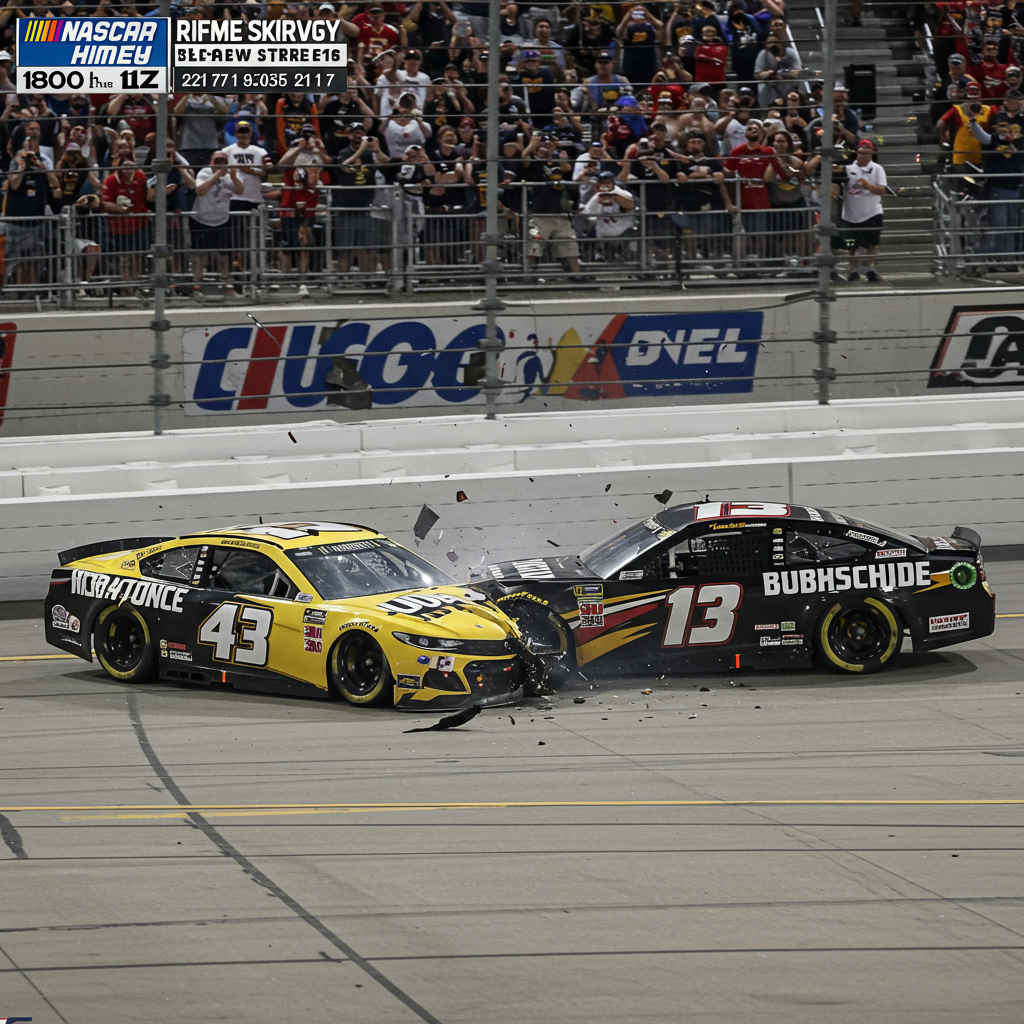Wimbledon’s historic Centre Court became a stark battleground between human perception and automated judgment one Sunday afternoon. A crucial point in a match saw Britain’s Sonay Kartal hit a shot that appeared long. Anastasia Pavlyuchenkova, her opponent, was certain it was out. Television replays seemed to confirm her view. Yet, the electronic line-calling system, now fully replacing human officials at this tournament, remained silent. This moment of technological ambiguity, followed by a replayed point that Pavlyuchenkova lost, highlighted the deep-seated tension surrounding the rise of technology in sports officiating. She later spoke of the game feeling ‘stolen,’ and it eventually emerged the system had been accidentally switched off – a simple human error behind a complex tech failure.
This incident wasn’t isolated. Later that week, another malfunction occurred during a match between Taylor Fritz and Karen Khachanov. The system failed to register the start of a point because a ball kid was still crossing the net. The umpire correctly ordered a replay. While the All England Club maintains “full confidence” in their ball-tracking technology, acknowledging human error in the first case and a system failure due to unusual circumstance in the second, these moments fuel broader skepticism among players and fans alike.
The Accuracy Paradox: Tech vs. Human Eye
Despite controversial incidents, experts widely agree that technology, when functioning correctly, is demonstrably more accurate than human officials. Hawk-Eye’s Electronic Line-Calling (ELC) system at Wimbledon, for instance, uses 12 cameras per court, leveraging AI to analyze ball and foot data in real-time. This sophisticated setup provides precision beyond human capability. Former Wimbledon champion Pat Cash champions ELC, stating it’s “definitely better than the human eye.” He acknowledges occasional computer errors but stands firm on its overall superiority compared to human officials. Veteran commentator Tim Henman has also fiercely defended the technology’s precision, dismissing claims of inaccuracy when the system is active. Diego Maradona’s infamous 1986 ‘Hand of God’ goal is often cited as a prime example of a decision technology would likely have overturned.
Yet, accuracy doesn’t always translate into trust. Football’s Video Assistant Referee (VAR) system provides another compelling case study in this paradox. Introduced to rectify clear and obvious errors, VAR has instead become a significant source of controversy and fan frustration. A notable incident saw VAR fail to correct a clear offside error that cost Liverpool a vital goal against Tottenham in 2024, officially deemed a “significant human error.” Despite the Premier League reporting high accuracy rates for VAR on “key match incidents” (96.4% last season), a single high-profile mistake can erode confidence. Norway is reportedly considering discontinuing VAR entirely, highlighting the level of dissatisfaction.
Why Do We Distrust Technology in Sport?
The reasons behind this distrust are complex, extending beyond mere technical glitches. Professor Gina Neff from Cambridge University points to a strong, inherent human sense of “fairness” as a key factor. Humans instinctively feel they understand context better than machines programmed only with rules. While a machine makes decisions based purely on its programming, people can incorporate multiple values and external considerations. What the technology deems the “right” call by the rules may not always feel like the “fair” call in a specific match context. This disconnect between technical accuracy and perceived fairness creates friction.
Entrepreneur Azeem Azhar suggests our reticence also stems from a perceived lack of “agency” over rapidly changing technology. We feel we don’t control its shape or direction, forcing us to adapt quickly in ways that disrupt familiar systems and beliefs. This sense of powerlessness contributes to skepticism.
The issue isn’t limited to sport. Early AI tools designed to spot cancer in scans were more accurate than human radiologists. Yet, patients preferred a diagnosis confirmed by human doctors. Similarly, autonomous cars have statistically fewer accidents than human drivers but face significant public fear, with many feeling “very unsafe” in one. This pattern suggests a fundamental human preference for human judgment, especially in high-stakes situations involving health, safety, or the outcome of passionately followed events like sports.
The Role of Human Oversight and Interaction
The concept of “responsible AI” emphasizes human oversight as a cornerstone for fair and safe technology deployment. It means someone monitors the machines. While Wimbledon’s Hawk-Eye system is managed by 50 human operators, the controversial incident where it was switched off highlights the vulnerabilities of the human-tech interface. Following this, the All England Club removed the manual deactivation option, aiming to prevent similar human errors.
Some players, like Karen Khachanov, voice a preference for human line judges, feeling the court is “too alone without them.” Others, like Emma Raducanu, express direct distrust in the electronic system’s specific calls, calling it “dodgy.” Conversely, Taylor Fritz appreciates the immediate, definitive calls of ELC, eliminating the need to challenge. This mixed player reception mirrors the broader societal debate.
Veteran sports journalist Bill Elliott offers a different perspective, suggesting that sport organizers pursue “perfection” with tech. While accuracy is desirable, perfection can potentially lead to boredom. Human error, inherent in traditional officiating, can add drama and unpredictable elements that are part of sport’s appeal. When technology fails, the shock is perhaps greater because we expect infallibility from machines, whereas we tolerate human mistakes to a degree. The challenge lies in finding the right intersection between human judgment and technological capability. As Professor Neff argues, framing it as human vs. machine isn’t productive; success comes from using “the best of both” to arrive at the best decisions. Integrating video review systems, which some tournaments like the US and Australian Opens already use alongside ELC, is one step being considered to provide officials with additional tools and address incidents where technology might falter or seem counter-intuitive.
Frequently Asked Questions
Is electronic line calling technology truly more accurate than human officials in sports?
Yes, multiple experts and data suggest that electronic line-calling systems like Hawk-Eye, when operational, are statistically more accurate at determining ball position than the human eye. Systems use multiple high-speed cameras and AI analysis to track objects with precision that surpasses human visual and reaction capabilities.
What were the main reasons for technology controversies at Wimbledon in 2025?
Two primary incidents caused controversy. One involved a crucial point where the electronic line-calling system failed because an operator accidentally switched it off. The other occurred when the system didn’t register a point start due to a ball kid’s movement. Both led to replayed points and sparked debate about the technology’s reliability and the role of human interaction with automated systems.
Why do fans and players struggle to fully trust technology in sports, even if it’s more accurate?
Distrust often stems from a perceived lack of fairness when technology makes decisions based strictly on rules without human context, a sense of losing agency over the sport’s direction due to rapid tech changes, and a general human preference for human judgment in high-stakes situations. Controversies like the VAR failure in football or system errors at Wimbledon, even if rare, also erode confidence in the technology’s infallibility.
Conclusion
The integration of technology into sports officiating is an ongoing, complex evolution. While systems like electronic line-calling and VAR offer unparalleled accuracy, they introduce new challenges related to human trust, perceived fairness, and the potential for technical or human-system errors. The tension highlights a fundamental question: what do we value most in sport – technical perfection or the unpredictable human element? Ultimately, finding the right balance, where technology assists rather than fully replaces human judgment, and where systems are transparent and resilient, may be the key to fostering greater acceptance and trust in the future of sport.



